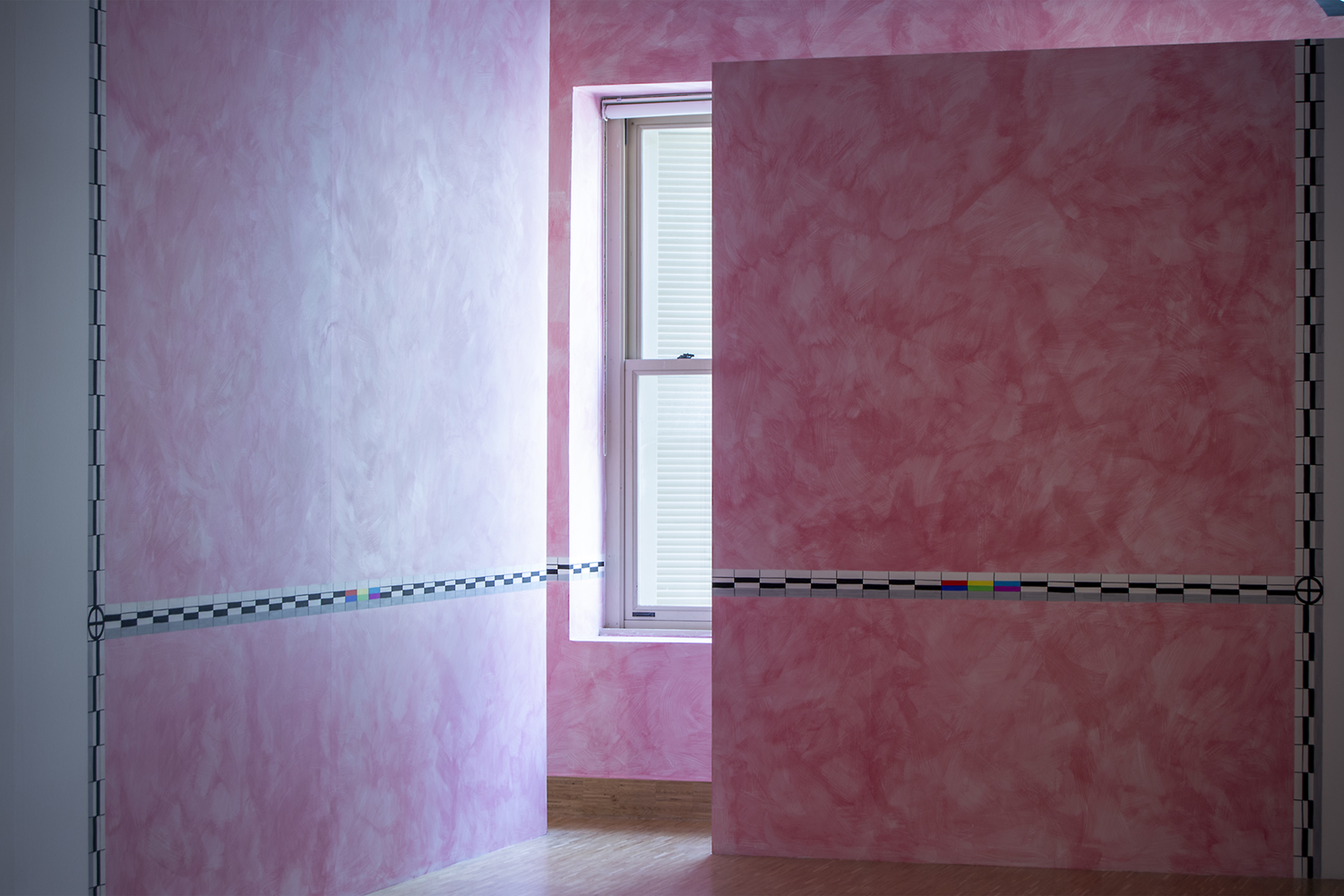Shows
“The Universe Flickers” at SALT Beyoğlu


The problem with imaging the universe is that it is vast and opaque. Explanations of its functions and origins are shrouded in astrophysical jargon. Yet, at the same time, it is precisely the sense of mystery that has made the subject so compelling to innovators across multiple disciplines.
Chinese science fiction author Cixin Liu entangles the enigmas of the universe with commentary on the equally bewildering societal changes during and after the Chinese Cultural Revolution in his contemporary classic, The Three Body Problem (2006). Liu’s novel in turn inspired Annie Fletcher, chief curator of Eindhoven’s Van Abbemuseum, to invite four women to exhibit spatial interventions at SALT Beyoğlu in a show named after a chapter in Liu’s book, “The Universe Flickers.”
The artworks of Anna Boghiguian, Rana Hamadeh, Navine G. Khan-Dossos and Merve Ünsal dialogue with each other not in form, but according to underlying themes, which range from the limitations of human knowledge to feminism and legal theory. Considering that most visitors spend very limited periods of time at art exhibitions in Istanbul, the relationships between the works was likely as incomprehensible as the theories on the origins of the universe. However, the inclusion of these wide-ranging nodes of thought, and the underscoring of the flickering of the universe, also served as Fletcher’s critique of the contemporary context that breeds noncommital modes of attention. “The Universe Flickers” was in fact part of “Conversations”—the main exhibition series at SALT Beyoğlu—which “demands in-depth, on-site interactions, and care.”

The murals of Khan-Dossos, Scenes From A Pre-Crime (Performance for Security Guards) (2018), painted in two separate, otherwise empty rooms, arguably attained public attention with the greatest success, employing color for a direct aesthetic experience to reference that of the palettes of the original ceilings in the former Siniossoglou Apartment that now houses SALT Beyoğlu. Her work was partly performative. Security guards were her only audience as she lathered the walls with paint, positioning the exhibition viewer as a latecomer who must piece together the supposed crime scene after the fact. In this way, Khan-Dossos drew attention to the hidden power relations that shape domestic and public spaces.
Ünsal occupied SALT Beyoğlu with a personified perspective of the city. Her 17-minute, two-channel video installation Outside Instead Of Before (2018) depicts bleak apartment windows and blends with her sound installation Listening to SALT Beyoğlu (2018), produced in collaboration with Atay Ilgun, of the sounds of the site’s walls, pipes and floors. Hung in the corner of the same room, Prop Surfaces (2018), a rumpled textile with an abstract print, evoked flickering, not of light but of space with its billowy contour. Together, the three components set the scene for a radio drama written by Ünsal, in which the building of SALT Beyoğlu itself is one of the main characters, commenting on Istanbul’s ruinous urban gentrification and channeling the voices that are silenced in the process of the city’s transformation.

Similarly interpreting the theme of a flickering universe in relation to instability and change, Boghiguian conveys the psychological anxiety that comes with the search for belonging in her piece How Minds Are Made (2018), a suite of paintings from 2010–11 and cut-outs from 2017–18 frenetically depicting the inner demons, blasted cityscapes and scarred lands that she encountered as she moved from Egypt to France, India and Canada. On certain pieces, Boghiguian has scrawled in prose about the transition from agrarian to industrial civilizations, among other points of chaos, both personal and social.
Perhaps the most complex piece at “The Universe Flickers” in terms of the use of media and conceptual scope was Hamadeh’s The Ten Murders of Josephine (The Tongue Twister) (2017), a 45-minute operatic multimedia installation displayed across ten channels, and specifically adapted for SALT Beyoğlu's top-floor exhibition hall to include a telephone, dot-matrix printer, synchronized LED text displays and swings.
Speakers rattled off the thunderous voices of four scripted performers who muse on everything from the 1783 Gregson versus Gilbert case affirming slavery laws, to the initial Qur'anic revelation, a Palestinian anti-colonial love song, and Guantanamo Bay torture music, among other prompts. Visitors could make calls on the interactive telephone to the opera’s main character, Josephine, based on Kafka's mouse songstress from his last short story. The recorded sound of her voice plays over the receiver, decrying the bounds of legibility, validity and procedure in courts of law, to emphasize what the exhibition placard called, "the unspoken, unspeakable; unmarked, unmarkable."
"The Universe Flickers" placed a tall order. Its spatial interventions asked the globalized public sauntering along the most commercial pedestrian drag in Istanbul to traverse the realms of science, literature and art. And, ultimately, it invited them to ponder Cixin Liu's mystifying thought that the entire universe doesn't merely flicker, but that its flickering can be interpreted as a form of coded communication comprehensible to humanity. The question is whether anyone is listening.
“The Universe Flickers” is on view at SALT Beyoğlu, Istanbul, until December 30, 2018.







